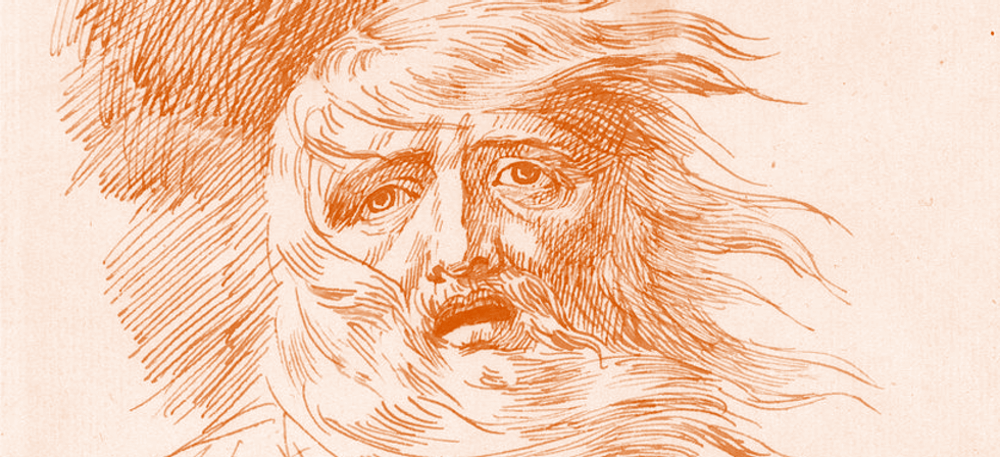Serial Reader Blog
New Serials: Tom Jones, Egil's Saga, Up from Slavery, and more12/03/2017 · Michael Schmitt · permalink Nine new serials to announce today! Some captivating biographies, challenging essays, genre-defining science fiction, and more. |
||
Dangerous Willows: Tolkien and Blackwood10/24/2017 · Michael Schmitt · permalink 
The eeriness of this lonely island, set among a million willows, swept by a hurricane, and surrounded by hurrying deep waters, touched us both, I fancy. Untrodden by man, almost unknown to man, it lay there beneath the moon, remote from human influence, on the frontier of another world, an alien world, a world tenanted by willows only and the souls of willows... This passage is from Algernon Blackwood's classic weird tale 'The Willows,' in which two travelers are beset upon (possibly) by a hostile nature -- either of this world or from the nebulous Elsewhere. Blackwood's writings would inspire and influence countless authors -- H.P. Lovecraft, William Hope Hodgson, Henry Miller, and Clark Ashton Smith to name a few -- including one fellow Englishman who was a 15-year-old student when "The Willows" was published: J.R.R. Tolkien. Tolkien would later cite Blackwood as the source for his iconic phrase "the Crack of Doom." More than that though, Blackwood's themes of a malevolent nature -- "the treachery of natural things in an animate world" as Jared Lobdell writes in The World of the Rings -- are found throughout Tolkien's writings. There's the murderous Old Man Willow and his "cunning mazes" in the Old Forest, Mount Caradhras, Mirkwood, Fangorn and the Ents... the list goes on. "Blackwood's evocation of landscape, as with Tolkien's, is unusually convincing," writes Michael D. C. Drout in the J.R.R. Tolkien Encyclopedia. Compare Blackwood's passage above with this from The Fellowship of the Ring: A dark river of brown water, bordered with ancient willows, blocked with fallen willows, and flecked with thousands of faded willow-leaves... Beyond homicidal trees, there's Blackwood's Wendigo. A horror from the deep untouched woods, it's "the Call of the Wild personified," as one character describes it, which calls to travelers with a voice that "resembles all the minor sounds of the Bush--wind, falling water, cries of the animals." Drout points out that the Wendigo, "with its dreadful aerial entity and wailing cries from above that cause panic in hearers" may have "contributed to one of the most important sources of terror to be found in Lord of the Rings: the airborne Nazgûl." Here's Blackwood, describing a character having heard the Wendigo's (or its victim's) terrible cry: Scarcely knowing what he did, presently found himself running wildly to and fro, searching, calling, tripping over roots and boulders, and flinging himself in a frenzy of undirected pursuit after the Caller. Behind the screen of memory and emotion with which experience veils events, he plunged, distracted and half-deranged, picking up false lights like a ship at sea, terror in his eyes and heart and soul. For the Panic of the Wilderness had called to him in that far voice. And then Tolkien's Nazgûl: The Nazgûl came again... their deadly voices rent the air. More unbearable they became, not less, at each new cry. At length even the stout-hearted would fling themselves to the ground as the hidden menace passed over them, or they would stand, letting their weapons fall from nerveless hands while into their minds a blackness came, and they thought no more of war, but only of hiding and of crawling, and of death. And as the Wendigo captures, corrupts, and mimics its victims to the horror of their companions, so too do the Nazgûl ensnare others and turn them into wraiths like themselves. Tom Shippey writes one of Tolkien's achievements was opening "a new continent of imaginative space for many millions of readers, and hundreds of writers – though he himself would have said that it was an old continent which he was merely rediscovering." It's delightful to discover that a fellow English writer, Algernon Blackwood, may have had a small part in building Tolkien's rediscovered continent. Further reading:
|
||
Creepy Non-Horror for Halloween10/18/2017 · Michael Schmitt · permalink If you're not a fan of horror, but still wants something spooky to read this Halloween season, LitHub has you covered with a great book list. Included is Franz Kafka's The Trial. This one you don't really understand in high school, but once you’ve lived for a while as an adult, it gets a lot scarier. All of a sudden you begin to identify with K, pursued, prosecuted, condemned by a nameless, faceless, remorseless authority, the rules constantly changing and never explained to begin with... I'll throw out my own recommendation from my collection of Halloween reads in Serial Reader: The Willows by Algernon Blackwood. More psychological thriller and weird fiction than horror, The Willows is the story of two friends on a canoe trip down the Danube. They find themselves stranded on a shrinking sandbank surrounded by ominous willows blowing in unceasing wind. It's a short story (8 issues on Serial Reader) packed with creepy atmosphere but lacking any straight-up horror or gore. The eeriness of this lonely island, set among a million willows, swept by a hurricane, and surrounded by hurrying deep waters, touched us both, I fancy. Untrodden by man, almost unknown to man, it lay there beneath the moon, remote from human influence, on the frontier of another world, an alien world, a world tenanted by willows only and the souls of willows. And we, in our rashness, had dared to invade it, even to make use of it! You can read both The Trial and The Willows in Serial Reader. Further reading:
|
||
New Serials: The Blue Lagoon, The Celtic Twilight, and The Good Soldier10/07/2017 · Michael Schmitt · permalink Three new serials to announce today! A dose of romance, adventure, passion, intrigue, and mysterious folklore. |
||
Serial Reader 3.0 Update: Goodreads Sync, Rewind, and More08/28/2017 · Michael Schmitt · permalink Today Serial Reader version 3.0 arrives for iOS and Android devices with some exciting new features: Goodreads syncing, issue rewinding, and more. Read on to learn what's new! Goodreads sync A new option in Settings allows you to link your Goodreads account to Serial Reader! Once you do, Serial Reader will automatically sync your reading data to Goodreads. When you start a new book, it'll be added to your currently reading shelf. When you finish a new issue, your progress will be updated. And when you finish, the book will be added to your read shelf. Serial rewind Whenever you get more than 2 issues behind in a book, an option will now appear in your Unread Issues list offering to rewind the serial to your first unread issue. I found when I fell a few issues behind in a serial, it was incredibly difficult to motivate myself to catch up. In beta testing I've used this feature more than I'd care to admit. It's kept me committed to reading books I likely would have just abandoned. I hope you enjoy it! Dark theme for iOS I've added a new dark theme for iOS users. Switch it on in Settings. It's great for night-time reading! Custom delivery times in iOS Premium users in the iOS app can now specify different delivery times for serials. Now you can get a new issue of "Pride & Prejudice" in the morning and a new issue of "Crime & Punishment" at night! You can set up your new delivery dates in the Settings section of each serial (where you can also pause and delete serials). Android users: fret not! I'm working on adding this feature to the Android version as quickly as I can. New BooksIf you haven't browsed the titles available in Serial Reader for a while, there are dozens of new books waiting for you! I've added new works by Dickens, Hugo, Sinclair, Austen, Twain, Fitzgerald, and more. Find the full list by browsing the "Added Recently" section in the app, or the full list online here. Thank You!It's been nearly 2 years since I released Serial Reader. Back then it was merely an experiment to try to break my own bad reading habits. I never would have guessed then how many people would enjoy using this app. At launch, Serial Reader had two or three dozen titles. Now it has nearly 450. And those books have been read - as in, from start to finish, 100% done - more than 150,000 times. Readers have earned more than 50,000 badges, finished more than 725,000 issues and blazed through nearly 2 billion words. Thank you. Thank you so much for using and enjoying Serial Reader, for supporting its development, for suggesting books and new features, for your kind words (even when reporting annoying bugs!) and for sharing it with your fellow readers. Making Serial Reader has been an incredibly rewarding experience because of you. I can't wait to see what the next 2 years will bring! 💙 -Michael |
||
New Serials: The Old Curiosity Shop, Love & Friendship, Main Street, and more08/26/2017 · Michael Schmitt · permalink Nine new serials to announce today! They include adventure, romance, science fiction, social commentary, and of course - pirates. |
||
Dealing with tragedy with King Lear08/17/2017 · Michael Schmitt · permalink  "Lear in the Storm" by George Romney
"Lear in the Storm" by George Romney
Nadine Dunseith writes in Folger's Teaching Shakespeare blog about teaching King Lear in times of grief. In this case, after the tragic deaths of two students.
Further reading:
|
||
Jane Eyre's classic twist08/16/2017 · Michael Schmitt · permalink Sophie Hannah lists the top 10 twists in fiction, including Charlotte Brontë's Jane Eyre.
Further reading:
|
||
Edith Wharton: Interior Designer08/15/2017 · Michael Schmitt · permalink 
Five years before publishing her first novel and eight years before The House of Mirth, Edith Wharton -- along with architect Ogden Codman -- published an interior design guide called "The Decoration of Houses." Within the book, Wharton attacked the excesses so common in Gilded Age design, calling overdecorated rooms "tiresome" and flashy patterns "unbearable." It's an attitude that would show up later in her fiction where she would attack what she called "an irresponsible, grasping and morally corrupt upper class."
The work was "an immediate success, and encouraged the emergence of professional decorators in the new style." Architectural historian Richard Guy Wilson has described it as "the most influential book ever published by an American on interior decoration and design."
Lapham's Quarterly has more quotes from the manual. Further reading:
|
||
F. Scott Fitzgerald's Unfinished Hollywood Novel08/13/2017 · Michael Schmitt · permalink Anne Margaret Daniel writes about F. Scott Fitzgerald's final unfinished novel in the Huffington Post. Between his arrival in Hollywood in 1937 and his death towards the end of 1940, Fitzgerald had an incomplete first draft of "The Last Tycoon."
Further reading:
|
||
|






















